Hildreth Meière Documentary Series - Watch Trailer
Hildreth Meière Documentary Series - Watch Trailer
Commissioned by: Maginnis & Walsh
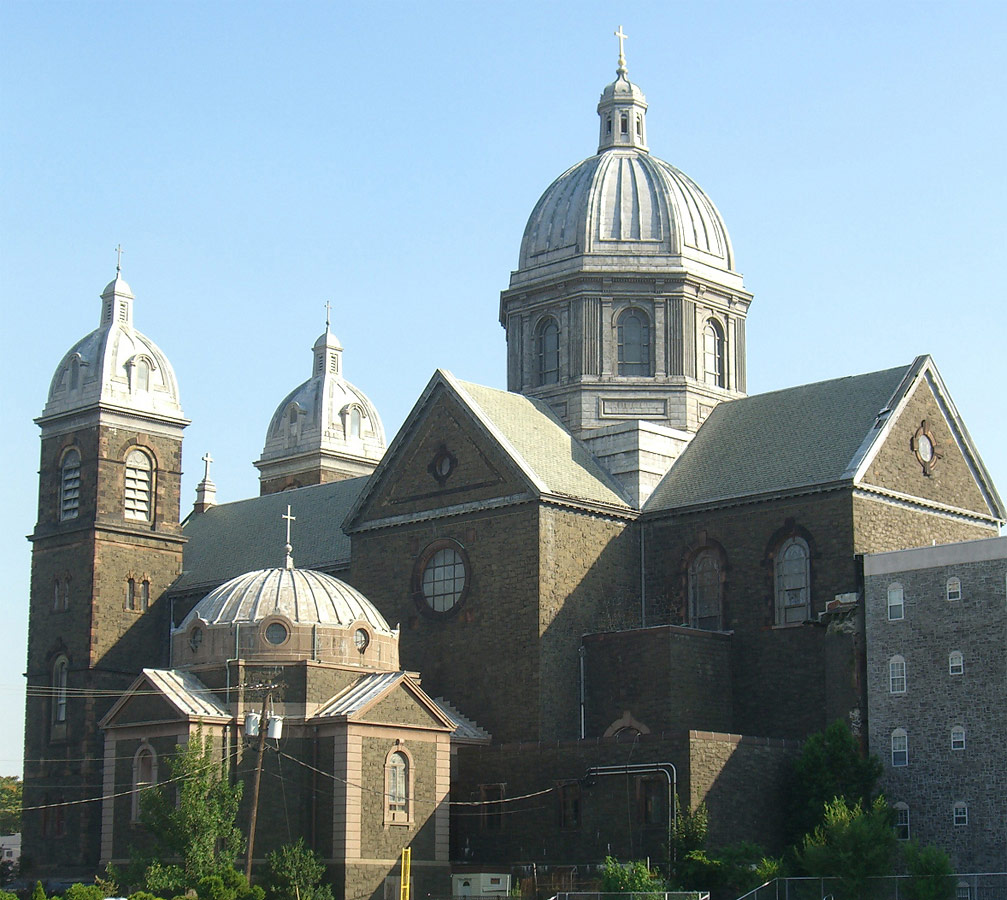
St. Michael’s Monastery Church with the Chapel of the Passion in foreground © Luigi Novi / Wikimedia Commons
In 1934, architect Charles Maginnis commissioned Hildreth Meière to decorate the Chapel of the Passion at St. Michael’s Monastery Church. The chapel had been recently added to the mid-nineteenth-century church to accommodate overflow crowds.1
Meière designed painted decoration for the chapel dome and three large altarpieces for niches in the chapel. A few weeks after Rambusch craftsmen had transferred Meière’s design to the dome and her three altarpieces had been installed, a fire broke out in the main sanctuary of the church. A workman is thought to have left a blowtorch on in the central dome when he went to lunch.
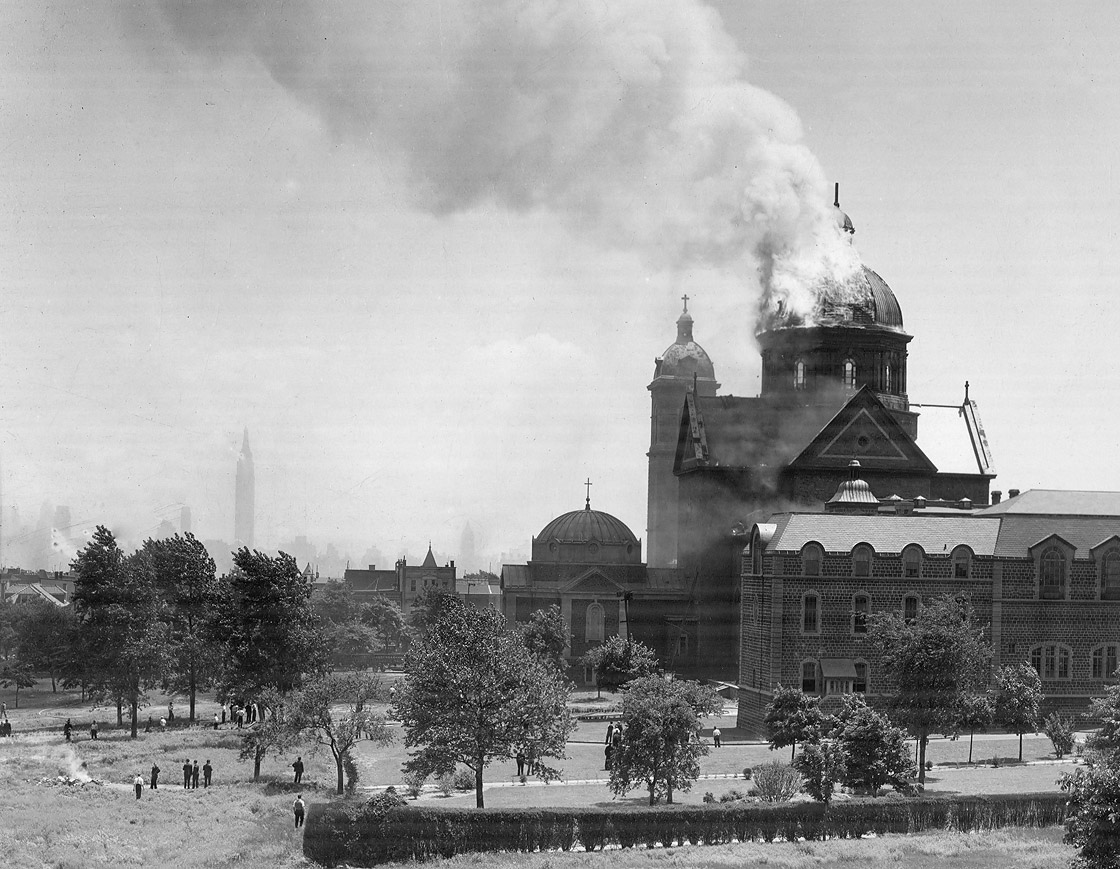
St. Michael’s Monastery Church on fire May 31, 1934. Passionist Historical Archives Collection, McHugh Special Collections, The University of Scranton, Scranton, PA
The resulting fire was so large that it could be seen from Manhattan. A headline in the New York Times read:
Historic Union City Church Burns; Monks Save St. Michael’s Relics; 12 Hurt as Site of Famed Novenas Is Swept by Blaze—Flames and Smoke, Whipped by Strong Wind, Visible to Crowds on Both Sides of River—Firemen Save Monastery.
The Times article described the damage to the main sanctuary:
The entire interior of the 65-year-old structure was destroyed. The great copper dome crashed into the nave from a height of 200 feet. When the flames were brought under control, only the walls of the church and the stone part of the two façade towers were standing.2
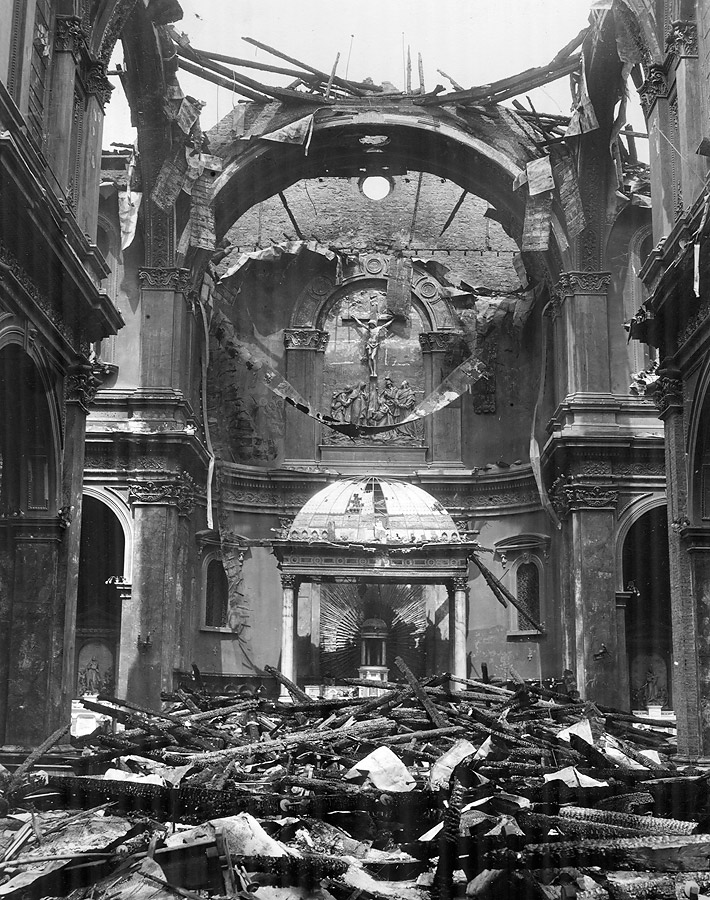
St. Michael's Monastery Church, Union City, New Jersey, after fire, May 1934, Passionist Historical Archives Collection, McHugh Special Collections, The University of Scranton, Scranton, PA
Meière had to wait a day for word as to whether the adjacent Chapel of the Passion with her work had been damaged. Incredibly, the chapel survived the fire, only to succumb to neglect by 1970.3
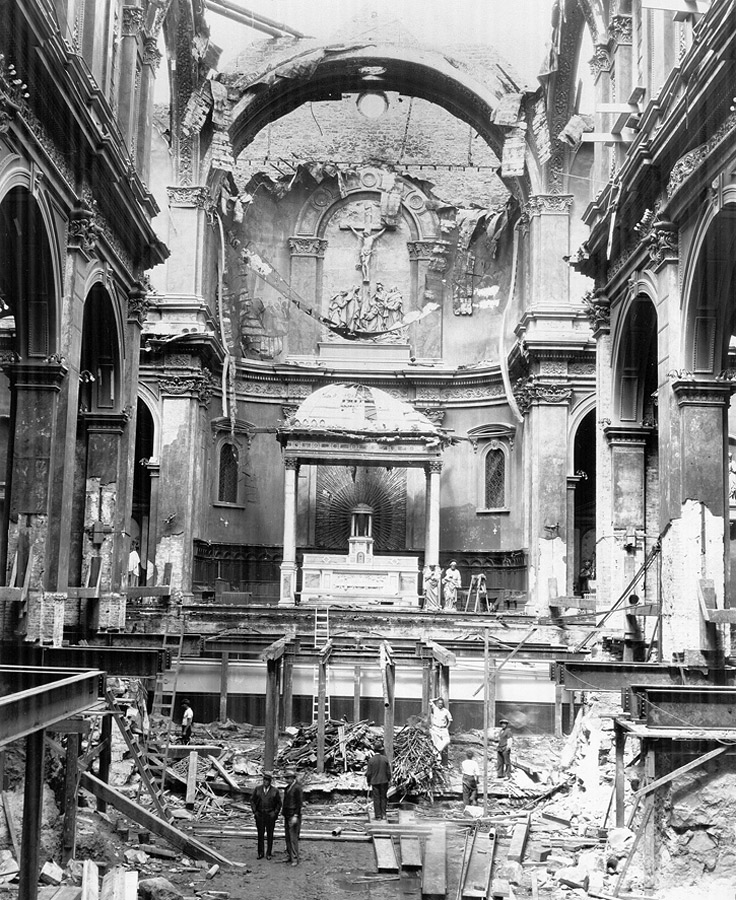
St. Michael’s Monastery Church under reconstruction. Passionist Historical Archives Collection, McHugh Special Collections, The University of Scranton, Scranton, PA
The Passionists rebuilt St. Michael’s with a lighter dome and a larger chancel, so that they could more easily handle the 3,500 congregants. Although the monks had been pleased with Meière’s decoration of the Chapel of the Passion, in order to be awarded the commission to decorate the rebuilt main sanctuary, she was asked to enter a competition, which she won. With the help of Lynn Fausett, then president of the Art Students League, and his brother Dean, Meière completed 1300 square feet of canvas for the main sanctuary in time for the rededication of the church in 1936:
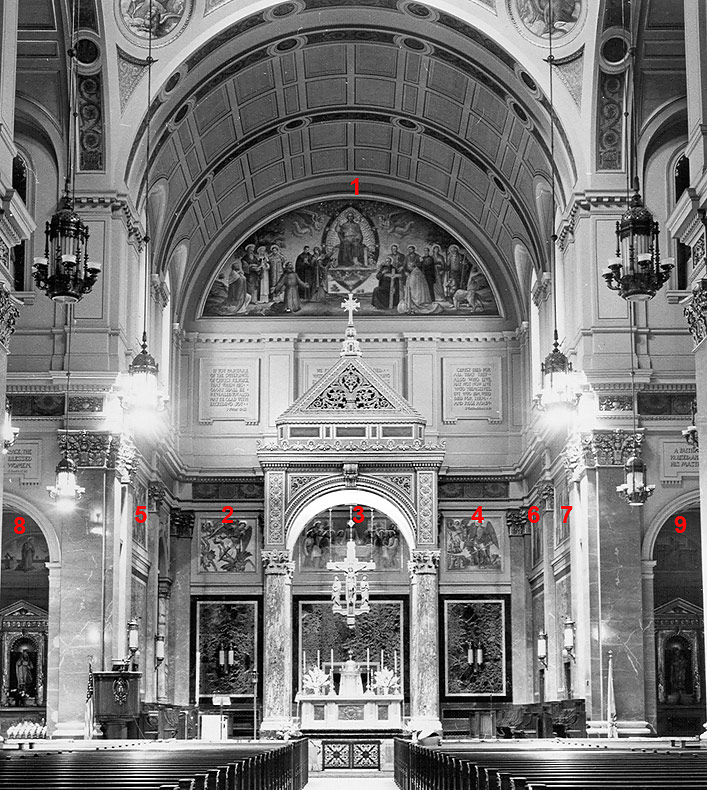
Rebuilt main sanctuary of St. Michael’s Monastery Church with Meière’s designs. Tympanum above west chancel wall: (1) Christ in Glory; west chancel wall below tympanum, left to right: (2) St. Michael Banishing Fallen the Angels from Heaven; (3) Last Supper; (4) St. Michael Weighing Souls of the Just and Wicked; south wall of chancel: (5) Old Testament Figures Who Prefigured the Institution of the Blessed Sacrament; north wall of chancel: (6 and 7) New Testament Saints Devoted to the Blessed Sacrament; tympanum above left side chapel: (8) Annunciation; tympanum above right side chapel: (9) Christ at Work with St. Joseph
Meière displayed eight of the paintings she had completed for the rebuilt main sanctuary, together with her preliminary gouache studies, in an exhibition at the Art Students League in December 1935.
The critic for the New York Herald Tribune described Meière’s paintings as “a faithful interpretation of the spirit, as well as the form of Renaissance religious decoration.” He pointed out, however, that Meière worked with a modern sensibility:
The entire decoration, which is painted in rich and luminous colors—reviving the oil and tempera process familiar to the work of Veronese and Tintoretto—is well simplified, and in this way touches two extremes—the primitive and the modern. There are beautifully painted details, but the work may be enjoyed as a whole for its reverent feeling for tradition, and for its lofty spiritual significance.4
Meière remembered the Passionist priests as more severe critics:
There were fourteen different canvasses for this job, the biggest being nearly forty feet across, with seven-foot figures. After it was in place, the priests used to study it with field glasses and decided that they didn’t like Our Lady’s expression. So I had to go up on the scaffolding and fix it. I had to stand on a single board, inside a cross piece, seventy-five feet up and work. That is five feet higher than the platform from which the girl jumped for the Trapeze-that-Broke act at the Circus. Lynn Fausett was with me, lower down, on three planks, and handed me up the brushes, but I never came so near hysterics in my life, or felt such pure terror.5
Today St. Michael’s Monastery Church is the Hudson Korean Presbyterian Church. The small membership maintains the enormous church as best it can. Although several of Meière’s murals are still in place, some have been badly damaged over the years.Those that remain, with the exception of Christ in Glory Surrounded by Angels and Saints on the tympanum, are hidden behind a curtained wall and are not visible to the public.
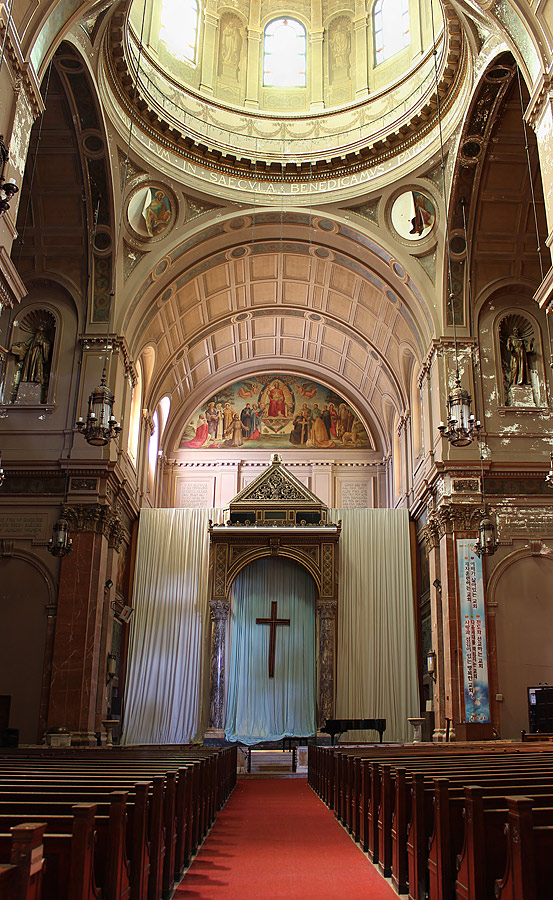
A curtained wall today hides all of Meière’s murals in the chancel except for Christ in Glory Surrounded by Angels and Saints on the tympanum
Because of its architectural importance and its having served the community for over 100 years, in 2014 St. Michael’s (Hudson Korean Presbyterian) Church was added to the list of Preservation New Jersey’s “10 Most Endangered Historic Places in New Jersey.”
For a full discussion, see Catherine Coleman Brawer and Kathleen Murphy Skolnik, The Art Deco Murals of Hildreth Meière (New York: Andrea Monfried Editions, 2014): 197-203.
New York Times, June 1, 1934.
Donald G. Presa, “An Architectural Survey of St. Michael’s Monastery Church,” William Paterson College of New Jersey, November 21, 1970. Passionist Archives, Scranton, Pennsylvania.
Carlyle Burrows, “Notes and Comment on Events in Art,” New York Herald Tribune, December 29, 1935, n. p.
Meière, letter to Mr. Thompson, May 23, 1936, HM Papers.
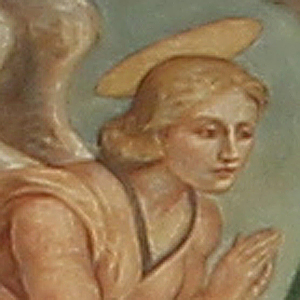
Hudson Korean Presbyterian Church
2019 West Street
Union City, NJ 07087